The Christmas cactus can easily be propagated yourself. You can find out how to do this and whether it needs to be cut and repotted here.
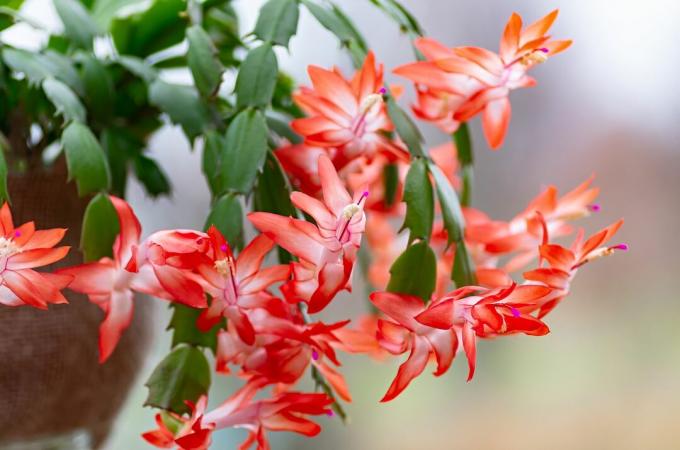
contents
- Christmas cactus: multiply yourself
- Does a Christmas cactus need to be cut?
- Christmas cactus: when and how is it properly repotted?
Christmas cactus: multiply yourself
The generative propagation by seeds is in the Christmas cactus (Schlumbergera x buckleyi) relatively simple and works very well, but it is actually only relevant for the work of breeding companies. It is even easier to propagate the Christmas cactus in early summer by cuttings. To do this, the end pieces located at the end of a drive are simply removed. The leaf-like structures are so-called phyllocladia and the converted shoot of the popular cactus plant (Cactaceae).
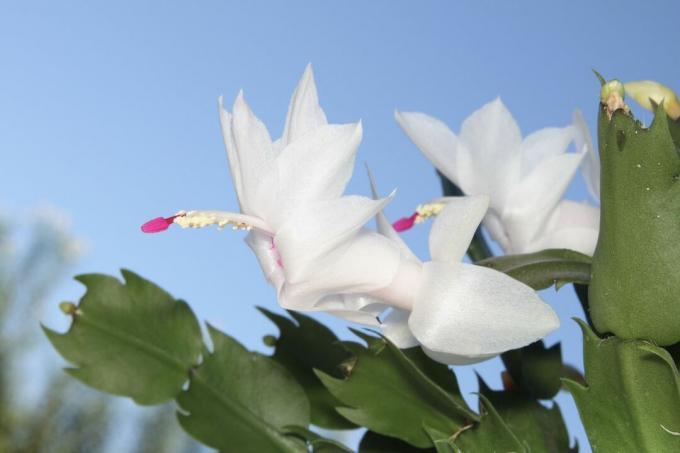
The terminal phyllocladia should be as large and mature as possible. You can tell from the slightly darker green color; the new shoot is rather light green. Either drive pieces with one phyllocladial member or with several phyllocladial members can be used. The cuttings can easily be detached from the mother plant at the point between two links. Cutting is not necessary and would only cause unnecessary stress and risk of infection. The cuttings are placed in a special, well-moistened cuttings substrate like ours
Plantura organic herb & seed compost plugged.There is no longer any need to water until the first roots have formed after about four weeks. In general, the following applies to the correct propagation of the Christmas cactus:
- Propagation is best achieved by cuttings
- Cuttings can be one or more phyllocladia (leaf-like shoot sections) long
- Use only terminal drive pieces
- Best time: early summer
- Phyllocladia should be as large and mature as possible
- Simply stick in a well-moistened substrate for the cuttings
- Rooting takes place after about 4 weeks

Does a Christmas cactus need to be cut?
It is not mandatory to cut a Christmas cactus. By nature, it branches very happily and, when there is enough light, assumes an appealing branch. However, if it has been cultivated for several years, the shoots may be very long and the typical overhanging growth somewhat extreme. If the growth of the Christmas cactus is then to be contained, the shortening cut is best made after flowering and before new shoots - i.e. in February / March.
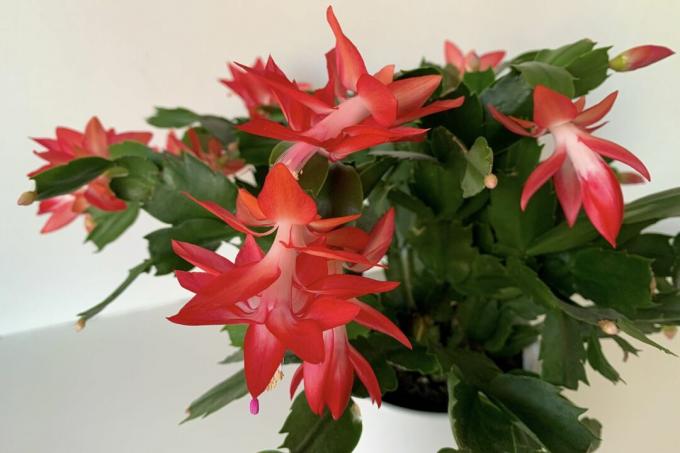
The distinctive point between two phyllocladia should be broken or cut. It is not advisable to cut through the leaf-like phyllocladia. This is unnecessary stress and carries the risk of life-threatening infections quickly affecting the plant. Otherwise, the shortening "cut" can also be combined well with your own propagation through cuttings in early summer. In general, the following applies to the correct pruning of the Christmas cactus:
- Shortening cut is not absolutely necessary
- Suitable time: February / March
- It is best to cut or break at a prominent point between two phyllocladia
- Under no circumstances cut through a phyllokladium and thus save the Christmas cactus stress and increased risk of infection
- Pruning can be combined well with propagation by cuttings in spring
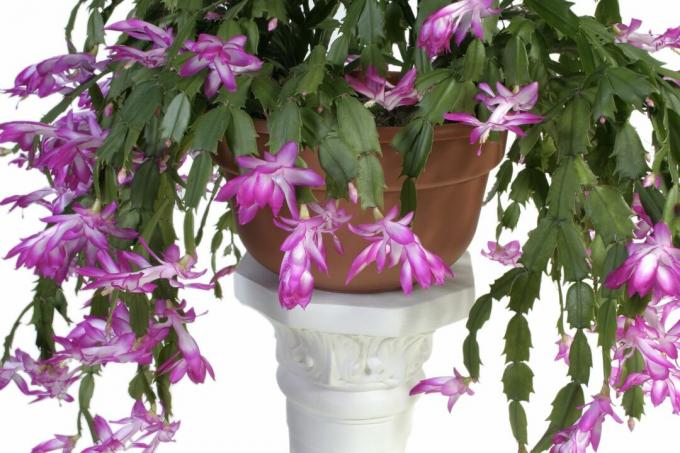
Christmas cactus: when and how is it properly repotted?
The Christmas cactus is a classic potted plant. Although it can spend a few weeks outdoors in summer, it is not worth planting in a bed. When the temperature drops, he has to move back into the house. If the perennial cactus is actually allowed to develop its bloom in several winters, it can make sense to repot it occasionally. It doesn't even do any harm if the Christmas cactus is embedded in fresh substrate every year as part of the repotting. The best time is after flowering, but before new shoots - around March.
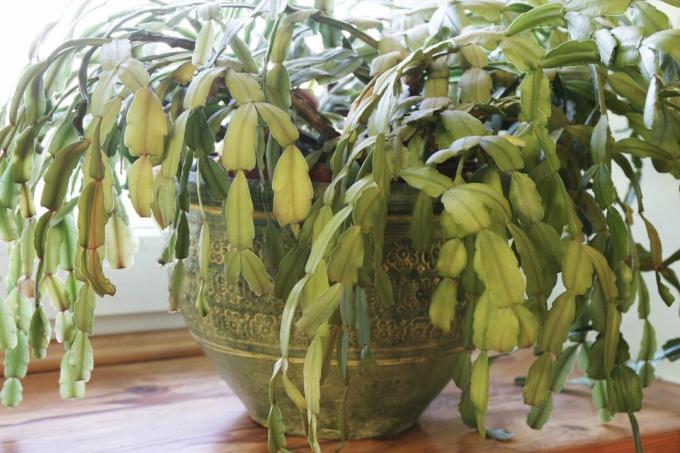
The old substrate is stripped off as best it can, but carefully. In a new, slightly larger pot than the previous one, the Christmas cactus is made happy with fresh substrate. Commercially available potting soil with a pH of around 5.5 to 6.0 is suitable. In order to achieve the optimal permeability of the substrate for the roots of the Christmas cactus, it is recommended to mix the potting soil with a little sand. For example, a perfect mix is a 1: 1: 1 ratio of sand that Plantura organic universal soil and the Plantura organic herb & seed compost.
Once the perennial Christmas cactus has found its way into fresh substrate and a new pot, it still needs to be watered. In general, the following applies to the correct repotting of the Christmas cactus:
- Best time to repot: March (after flowering)
- Can be carried out annually
- Choose a new pot slightly larger (1-2 cm larger in diameter)
- Strip off old soil as much as possible
- Mix in sand for optimal permeability of the substrate and to avoid waterlogging of the potting soil
- Pour the Christmas cactus in the fresh substrate after repotting

In addition to pruning, there are other maintenance measures that are necessary for the Christmas cactus to bloom. Here you will find tips and tricks for Caring for the Christmas cactus.



